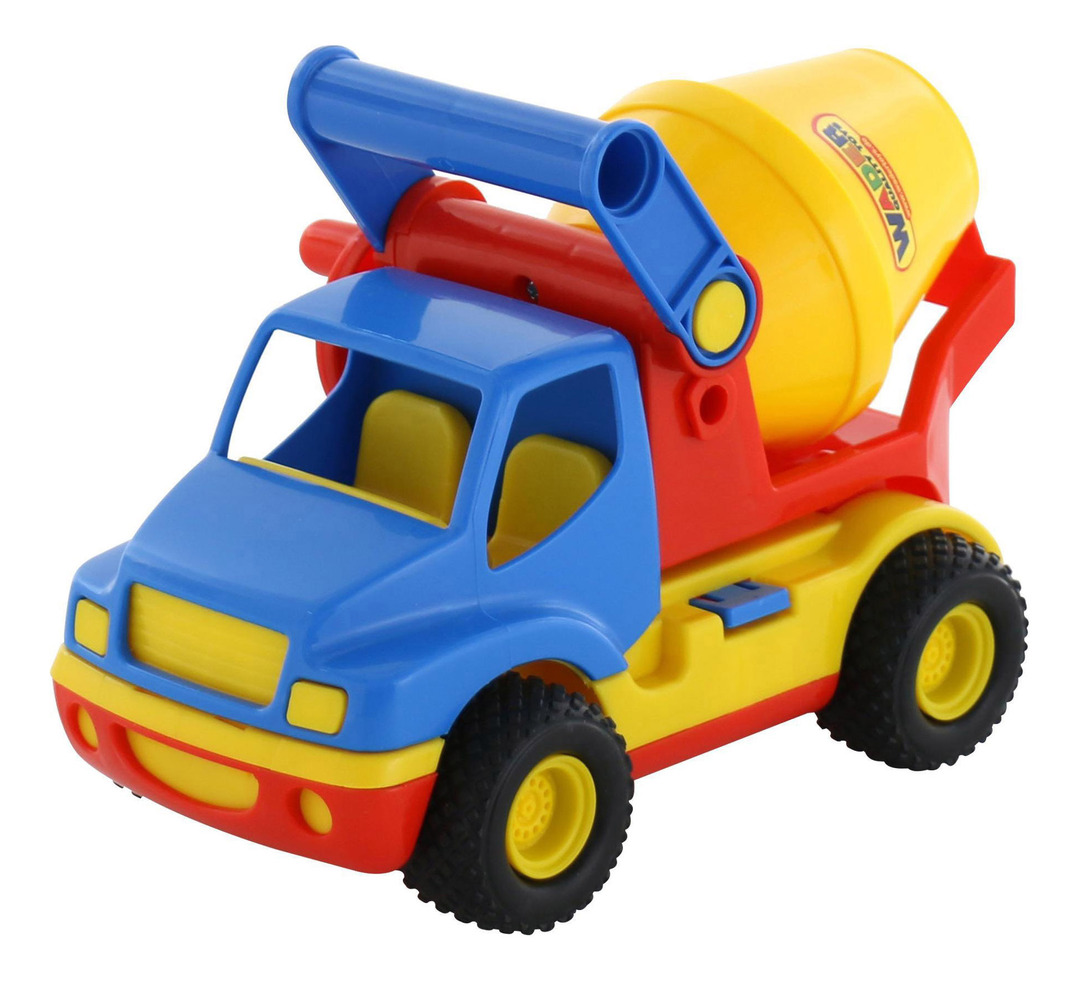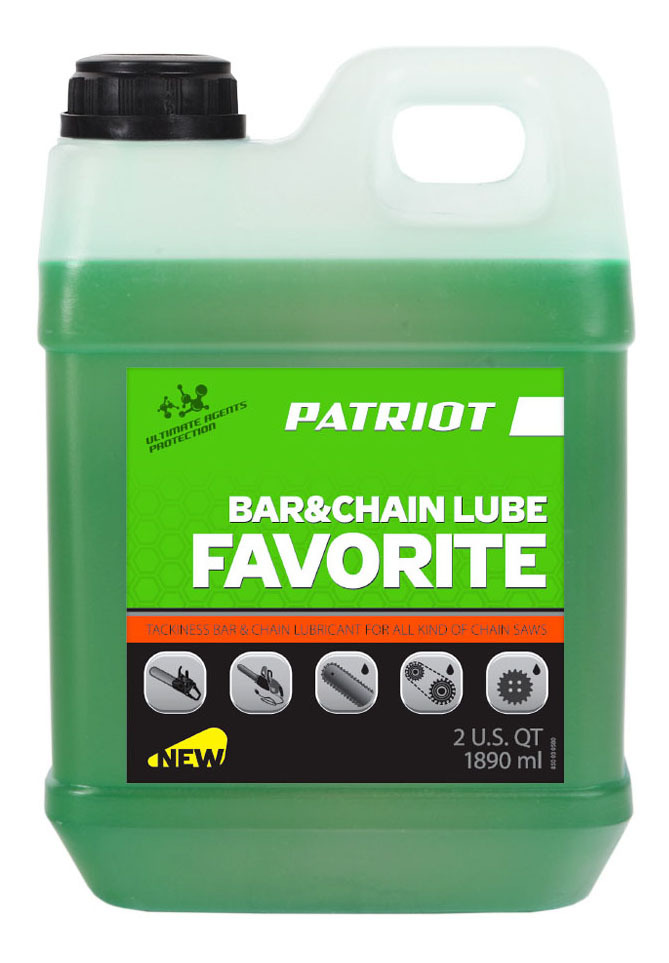Running is the most popular type of training. Everyone is running around: men, women and children. But in order for the classes to be useful, and not to injure the legs, it is necessary to choose the right sports shoes. Keds and universal sneakers are not suitable here - you need special models that take into account your weight, sex, foot placement and even running technique.
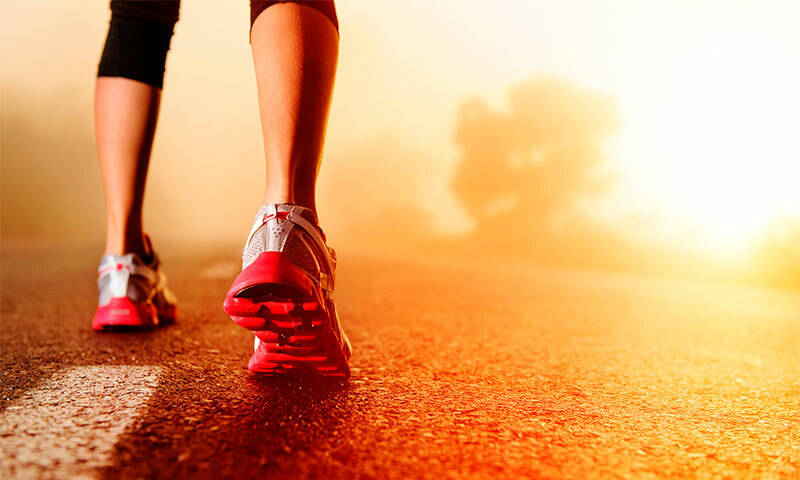
Contents:
- The best running shoes companies for running
- The features of the running shoe
- The variations of the running shoe
- The parameters of the running shoes choice
- Which running shoes to choose
- The cost of the running shoes
The best manufacturers of sneakers - which company to choose
Sports shoes should be chosen among the rulersknown manufacturers. And not only because solid companies value their reputation and monitor the quality of their products. Serious brands themselves are engaged in the development of footwear, study the loads that athletes experience during classes, and even create new materials for the production of sneakers.
Those who seriously run and need a comfortable, ergonomic footwear, it is worth looking for your pair in the following companies:
1. Asics
2. Mizuno
3. Nike
4. Adidas
5. Saucony
In the article, the best models of running shoes were discussed in detail by the products of these and other well-known manufacturers. But in the case of sports shoes, the choice should be based also on the individual characteristics of the person. Therefore, read the recommendations of experts that the purchase was really successful.
Features of cross-country running shoes
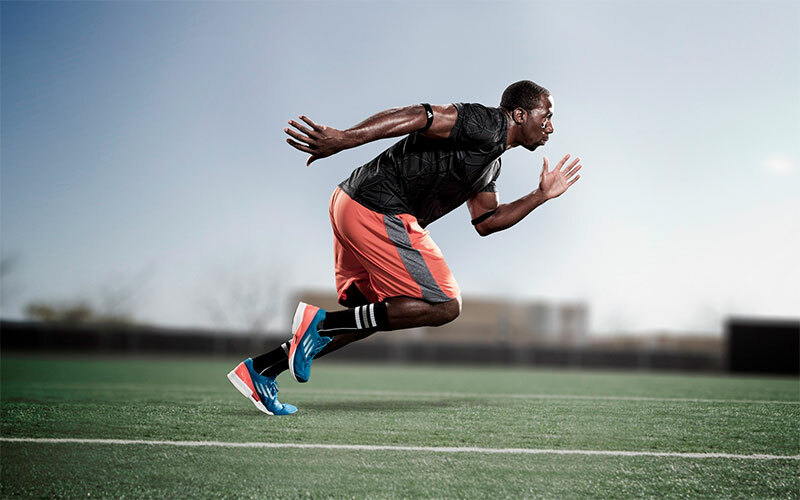
Running shoes have a number of differences from other types of sports shoes. This applies not only to the cut, but also to the properties of the materials used:
1. The top is soft and flexible, with a minimum of stitches. Often has mesh inserts made of nylon or polyester yarns.
2. Backrest with hard reinforcement for reliable heel fixation and a cut that reduces pressure on the Achilles tendon.
3. Coverage is a kind of "collar" for the ankles. Soft and dense, it fixes the foot well and prevents rubbing.
4. The cross-piece "dissipates" point shock loads, performing the functions of a peculiar armopoyas.
5. A sole with a mandatory thickening on the heel and a torn toe. It is made of soft and elastic, but strong materials, providing good adhesion to the surface.
Other elements of the sneakers( tongue, lacing) do not differ in principle. Like the insole, although it can be removable, non-removable or even have a "memory effect".
Kinds of running shoes for running
Before going on to review the main types of treadmill, consider a classification common to all models.
First of all sneakers are selected on the basis of gender. Men and women have different structure of the foot and the ratio of body weight to its area, because of which the pressure on the soles of the representatives of the two sexes will be different.
If you do not touch on design issues, the characteristic features of men's running shoes are:
1. More pronounced depreciation.
2. Wide shoe.
3. A smaller rise in the heel area.
Women's sneakers have a lower degree of depreciation, because athletes are usually lighter than men. And to keep the Achilles tendon, the heel on such models rises a little higher.
In addition, sports shoes are divided into subspecies depending on the running surface. There are three groups of sneakers:
1. For running on asphalt.
2. For the gym and equipped treadmills.
3. For cross-country running.
It is better to use sneakers according to their purpose - so they will last longer, and the owner will be much more convenient.
Seasoning
Summer
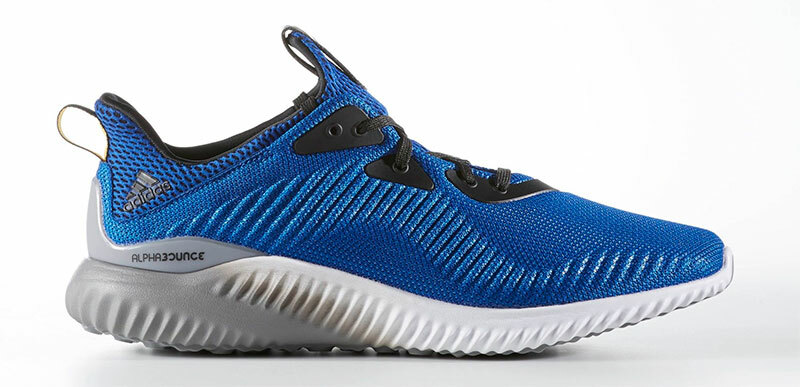
Summer sneakers are made from the lightest materials. The sole here is foam or silicone, the top is made mostly of mesh. In such shoes, the legs "breathe well", and the sneakers themselves have low weight( up to 500 grams of steam).They can run not only along the street in warm weather, but in the gym all year round.
Winter
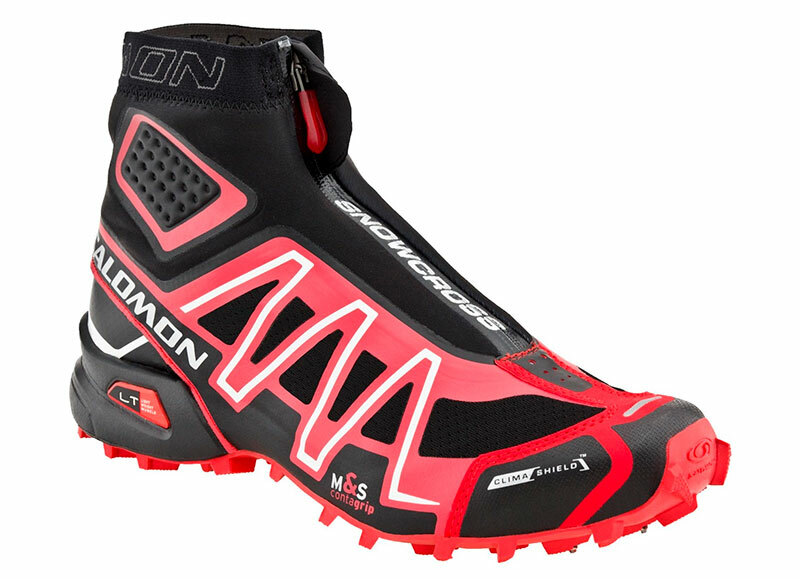
Winter sneakers are always denser and can weigh up to 800 g. The ideal option is the membrane material of the upper Gore-tex type with an additional insulation. The sole here is thicker, made of expanded polystyrene, protecting feet from cold and moisture. Winter models are often supplemented by spikes - removable or cast. The only disadvantage of insulated sneakers is that the legs in them do not "breathe" at all, and even Gore-tex does not solve this problem.
Interseasonal
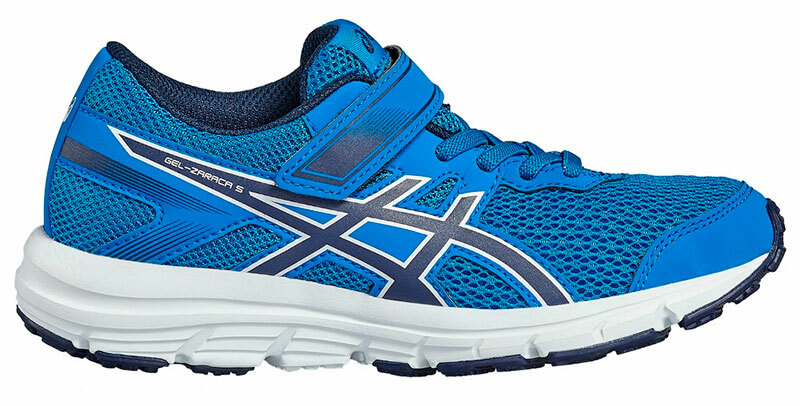
Interseasonal models are something between winter and summer. Do not get wet, have a dense sole, and at the same time there is some kind of ventilation.
Training
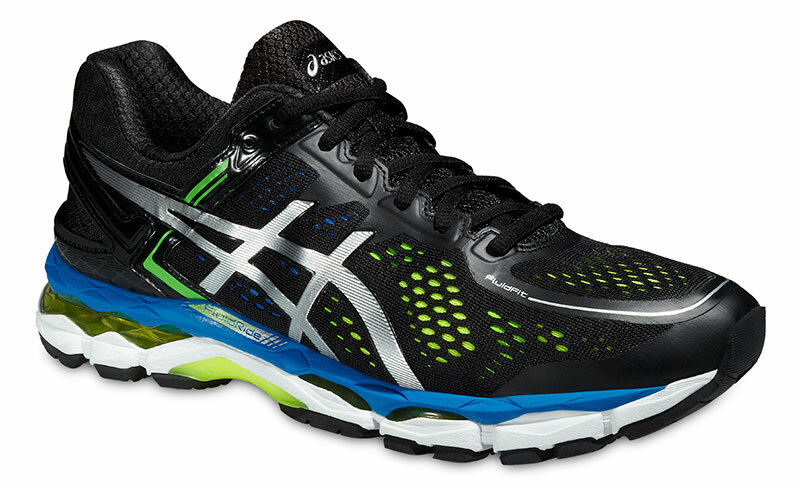
Suitable for both professional athletes and amateurs. Such models have good cushioning and slightly increased weight: a pair of sneakers stretches for 250-400 g. A durable sole perfectly distributes the pressure of the foot, and the top is manufactured using Fluid Fit technology from the polymer mesh.
These sneakers are more convenient and safe, but for the championships they do not fit because of their great weight. In addition, their sole is designed for outdoor asphalt, and not for the rubberized coating of the stadium.
Pros:
- Reliable foot support and protection;
- Good depreciation;
- Soft, but wear-resistant outsole;
- Ventilation of the legs thanks to the mesh top.
Cons:
- Increased weight.
For competitions
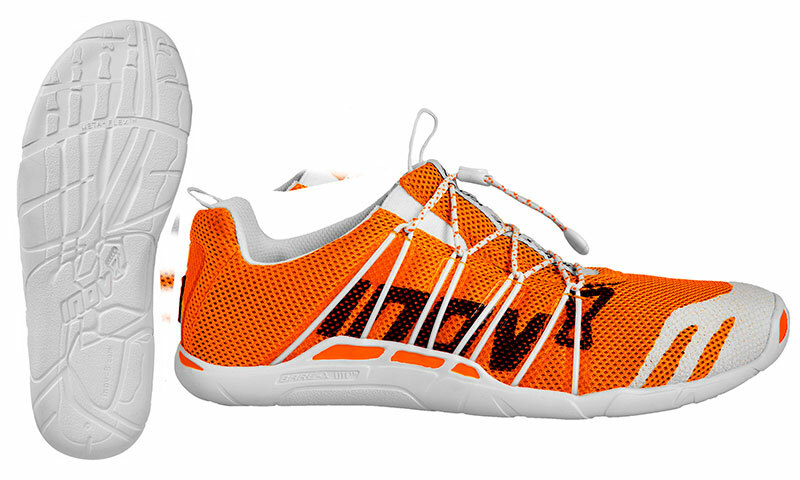
This is the choice of professionals. As a rule, such sneakers are almost twice as light as training models( about 200-250 g), which allows you to develop the maximum speed at a distance. Here, the sole is thinner and more flexible, and also has better grip on the treadmill. Sneakers for competitions in athletics are very rigid grip of the ankle, which is not always convenient, but effective to maintain the speed of the runner. But there is almost no depreciation, so for frequent training, such shoes are not good.
Pros:
- Minimum weight;
- Allow to develop a high speed athlete;
- Perfect grip of the sole with the surface;
- Hard fixation on the leg.
Cons:
- Suitable only for professional athletes;
- Not lasting.
For cross-country running
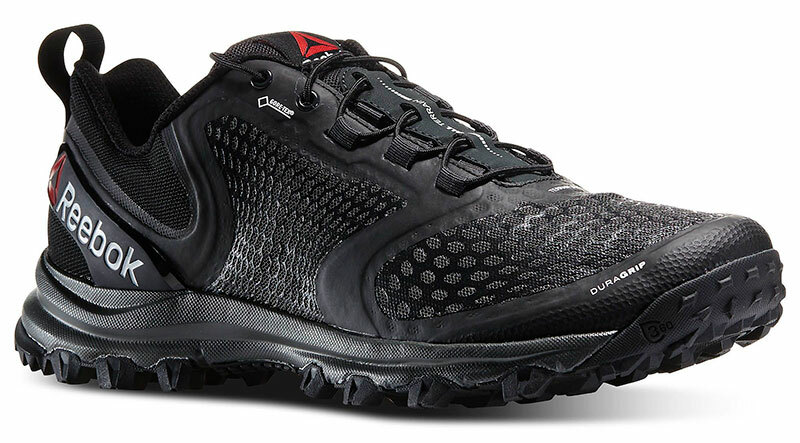
These are special models for those who like to go on off-road. Such sneakers have increased to 400-500 g weight due to some features of the design. Here comes a reinforced, but relatively flexible sole with a protector and a tight waterproof top.
Advantages:
- Do not soak;
- Thick outsole with good shock absorption and stone protection;
- Uniform weight distribution;
- Good flexibility allows you to take descents and ascents;
- The relief protector provides maximum grip on the ground.
Cons:
- Relatively large weight;
- No ventilation.
Running parameters for running shoes
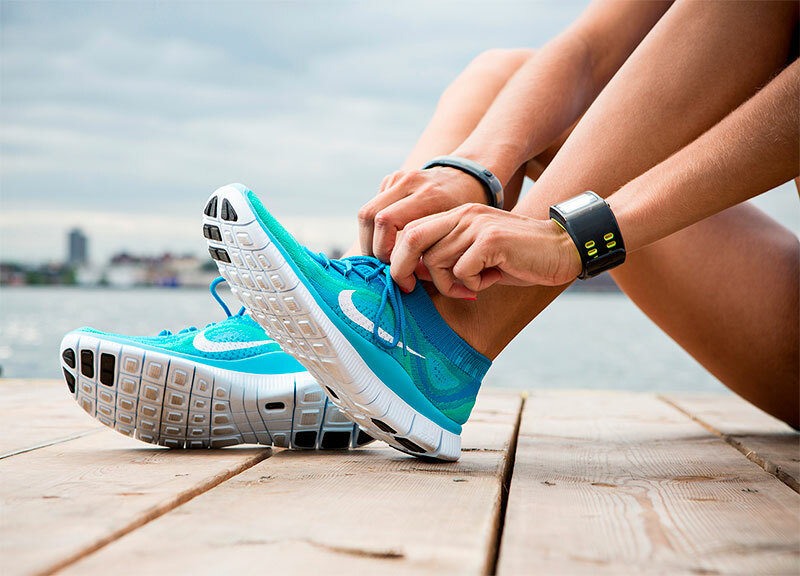
Size
Running sneakers should sit tightly on the leg and at the same time do not squeeze it. Therefore, it is necessary to select the size of shoes as precisely as possible and to measure it before purchase( the figure on the sole may not correspond to reality).Ideal sneakers for you will be those in which the big toe does not reach the toe by 3 mm. The stock width should be about 1.5 mm on each side.
Pronation
This is a measure of the obstruction and deflection of the foot at the moment of the thrust, when the heel breaks away from the ground. When running at people with different pronation load on the sole is distributed in its own way, which means that support and depreciation should be selected for the structure of the foot.
To determine the pronation and height of the arch, you can use the simplest "wet test".Wet your bare feet and stand on a solid sheet of paper for a minute. When wet marks appear, circle the contour with a felt-tip pen. Between the foot of the toe and the heel, you will see an arched bend, and the width of the remaining spot in the narrowest point near this arch will determine the pronation of your foot.
After the performed operation, it only remains to choose the right version:
1. With flat feet, the foot falls inward, and the sheet has a wide print under the arch. In this case, you need sneakers without a supinator, otherwise when you run you will feel discomfort.
2. A very narrow "isthmus" between the foot of the toe and the heel is a sign of supination. Your foot has minimal contact with the surface, which increases the load on the legs and requires good cushioning from the sneakers. Inside, a high arch support is required for a larger area of support.
3. With normal pronation, the arch bend reaches approximately the middle of the foot. Here, with natural cushioning, everything is in order, so there will not be any special elasticity from the sole of the sneakers.
Degree of depreciation
This parameter depends on the weight of the athlete and the features of the distances to which he is running. To thin people the strengthened depreciation especially is not necessary( the average or facilitated model will approach), while full it is simply necessary.
Also thickenings and elastic inserts can be placed in different parts of the sole:
1. On the toe - for running for short distances, and also, if necessary, to make frequent jerks during jumping moments.
2. On the heel - for a marathon and training runs, when the weight of the body on the landing all the time falls on the heels.
Outsole material
Running sneakers should bend fairly well, especially if they are models in which you have to run along a street or rough terrain. Ideally, shoes should bend at an angle of 45 °, but much depends on the material of the sole. He also determines the cost, the degree of depreciation and the "tenacity" of sneakers.
The following soles materials are on the market:
1. Rubber is the most common option, it has a low cost, but it provides excellent grip and really bends well.
2. BRS 1000 is a rigid synthetic rubber, resistant to abrasion. It is usually used on individual parts of the sole.
3. Rubber mixture DRC is a non-abrasive material that is suitable for all kinds of tracks.
4. Duralon is lightweight, porous rubber that does not have high wear resistance, but provides excellent flexibility and cushioning.
Upper material
Each manufacturer tries to improve its products from different materials. But the most popular and convenient are the following types:
1. Natural leather is durable and pliable, but the feet in leather shoes "breathe" badly. This is more of an option for the off-season.
2. Synthetic leather - stronger and lighter than natural, but it lacks flexibility.
3. Nylon or PE mesh is not the main, but the most common material for summer sneakers and inserts in lightweight models. It is characterized by sufficient strength and ensures optimal ventilation of the footwear.
4. Gore-tex( Gorex) is a three-layered material with a fluoroplastic membrane located between the fabric top and a warming lining."Winter" option, allowing the legs not to freeze, but at the same time ensuring minimum air exchange.
Which sneakers to choose
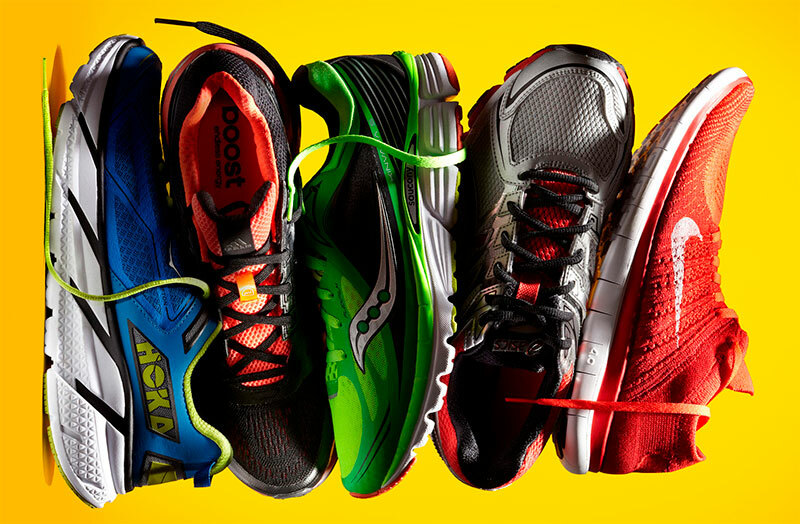
1. If you just decided to run for yourself, choose training sneakers with a thickened and well-cushioned heel. Mesh inserts even in the "autumn" models will make sports more comfortable.
2. Professional athletes constantly participating in competitions will additionally require a lightweight pair of sneakers with maximum foot fixing.
3. For lovers of winter jogging down the street it is better to choose a good warmed model from Gortex on a thick sole with a tread and spikes.
4. Residents of villages on the periphery and those who basically choose to run dirt roads, you need medium weight sneakers on a thick, but very flexible sole with a curved nose and a powerful protector. Also, you will need good depreciation and reliable foot coverage, otherwise a dislocation can not be avoided.
5. If you drive excess weight, take sneakers with maximum shock absorption. So you reduce the load on the shin and knee, ease the work of the foot, and you will grow tired less, which means you can run longer.
Cost of running shoes for running
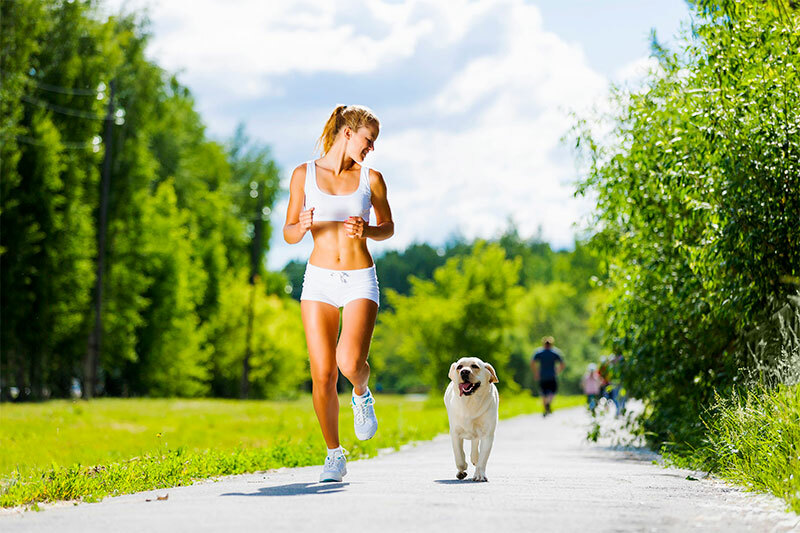
1. Training models can be bought within 2500-40000 rubles.
2. Professional shoes for running competitions will cost about 10-25 thousand.
3. For the winter couple, prepare to give at least 5000-10000 rubles.
4. Approximately the same number of running shoes for cross-country running, only the lower threshold here is set at 2 thousand.


